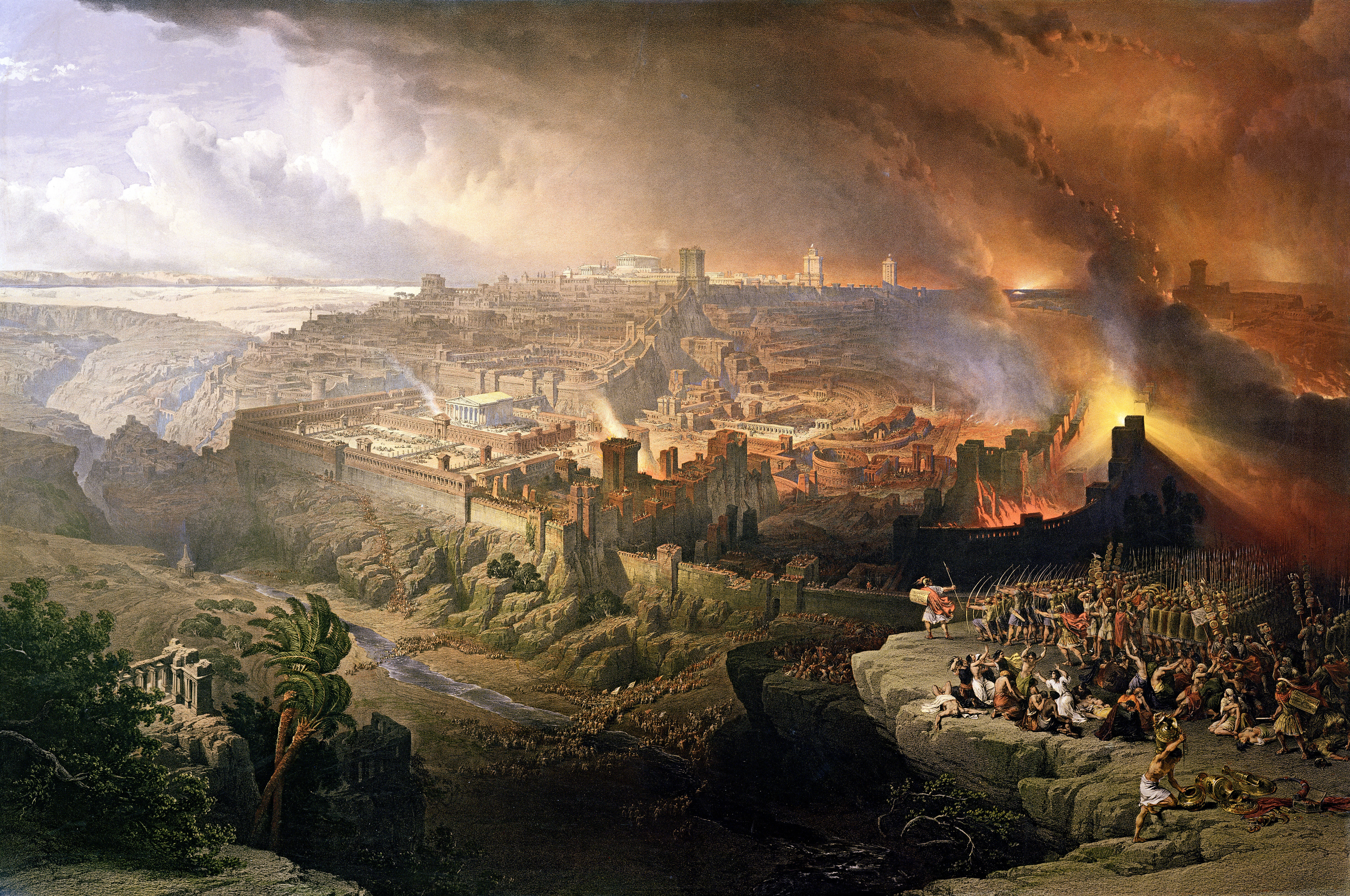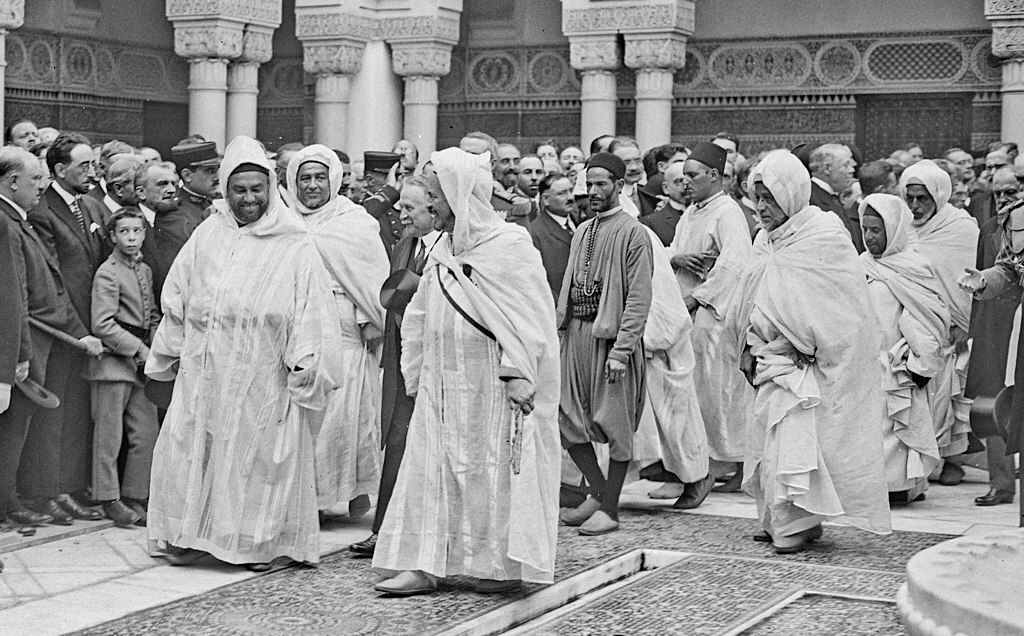
The Siege and Destruction of Jerusalem by the Romans under the Command of Titus, AD 70, David Roberts, 1850
Killing an entire world is the ultimate act of villainy in science fiction. The most memorable such fictional atrocity occurs in George Lucas’s Star Wars (1977), when the Galactic Empire’s imperial officer Grand Moff Tarkin fires a fatal beam from the newly constructed Death Star at the planet Alderaan, “the bright center of the universe,” to demonstrate its awful power to captive rebel leader Princess Leia Organa. Jedi Master Obi Wan Kenobi, in transit to Alderaan aboard the Millennium Falcon, senses the enormity of this casual murder of two billion individuals. He remarks, “I felt a great disturbance in the Force, as if millions of voices suddenly cried out in terror and were suddenly silenced. I fear something terrible has happened.”1 The Empire had committed what we might term cosmocide, or the extermination of an entire world. Although it may risk trivializing the massive atrocities our world has witnessed in the past century to evoke them through a Hollywood fantasy, we should also acknowledge that the pulverizing of Leia’s (and Luke Skywalker’s) home world has shaken millions of filmgoers sheltered by selective media journalism from exposure to the real thing.
Lamentably, cosmocide in the full sense of the destruction of a whole planet became a possibility and not merely the stuff of speculative fiction on July 16, 1945, when the first nuclear device was detonated. On that day, as physicist (and Sanskritist) Robert J. Oppenheimer witnessed the first successful test of the atomic bomb he had fathered, he famously quoted the Bhagavad Gita, verse 11:12 (referring to Krishna): “If the radiance of a thousand suns were to burst at once in the sky, that would be the splendor of the mighty One.” He further recalled in this connection verse 11:32, translating it as, “Now I am become Death, the destroyer of worlds.”2
Today, a massive exchange of thermonuclear weapons could plunge the earth into long-term darkness, killing most life. Even short of such a planetary slaughter, nuclear-armed states, and even those with extremely powerful conventional weapons, can wipe out “worlds,” in the sense of entire cities or regions. We have beheld such orgies of desolation in wars in the Middle East in the twenty-first century that have leveled cities in Syria, Sudan, Gaza, and Israel.
***

Si Kaddour Benghabrit (center) at the inauguration of the Grand Mosque of Paris in 1926 / Wikimedia Commons
Both the Jewish and Muslim spiritual traditions refer to cosmocide, and interestingly enough, both equate it with the killing of even one human being. In the Qur’an’s chapter of The Table, 5:32, it is written,
For this reason, We ordained for the children of Israel that whoever kills a single soul (except for executing a murderer or a brigand in the land), it is as though that person had killed the whole world. And whoever saves a soul, it is as though that person had saved the whole world. Our messengers came to them with clear signs, but many of them transgressed in the land even after that.
The Islamic scripture here contains an explicit reference to a passage of the Mishnah, the rabbinical oral tradition about Jewish law. Just as the Jewish sages themselves believed that this interpretation flowed inexorably from biblical verses, so too is God depicted in the Qur’an as endorsing the passage as rooted in revelation. The passage was incorporated into the Jerusalem Talmud, completed around 400 CE, which is certainly the edition referred to here in the Qur’an. The later Babylonian Talmud, likely completed sometime in the mid-to-late seventh century—after the Qur’an—contains an alternative version of this sentiment, specifying that killing a Jew is like killing all humankind. The Babylonian Talmud takes precedence for most Orthodox Jews, but the historically minded understand that the earlier text is more primary.
This reference to Judaic lore is only one of many in the Qur’an, where we find numerous episodes from the Hebrew Bible, retold to emphasize distinctive spiritual insights. This scriptural overlap presaged many centuries of fruitful interactions between the scholars and sages of the two religious communities. Despite the conflict between Muslims and Jews over territory in the Holy Land in the past century, the two have historically sometimes had warm, if complicated, relations. Before the twentieth century, Muslim rulers sometimes had Jewish ministers in their government, as with the Sassoon family, who served as treasurers for the Mamluk dynasty that ruled over Ottoman Iraq in the eighteenth to early nineteenth century. Jewish and Muslim thinkers debated ideas and learned from one another. Some Jewish thinkers in Muslim lands wrote important works in Arabic. I once visited the Spanish Synagogue in Prague, built by Jewish modernists in 1868 in what was called the “Moorish style,” referencing Andalusia. It was a paean by members of the Jewish Enlightenment (Haskalah) to the relative tolerance and ecumenicism of the Umayyad era in southern Spain. And even if Andalusia has been romanticized (the later Almohad era was brutal and intolerant), the Jews of Prague were not entirely mistaken. Talmudic scholar Samuel ibn Naghrillah (d. 1056), for instance, rose to become the first minister of the post-Umayyad Muslim statelet of Granada.
The universalistic and spiritual implications of the Qur’anic verse (5:32) were explored by the great ecstatic Sufi thinker Rūzbihān Baqlī (d. 1209) of Shiraz. He said the verse shows that God
created souls from a single handful, gathering them together. Then he separated and differentiated them and related them to one another regarding their capacities and creativity. So whoever kills one of them, that murder affects all souls whether they know it or not. And anyone who saves a believing soul with the mention of God and his unity and the description of his beauty and glory—so that he comes to love its creator—and saves it by virtue of his knowledge and the beauty of his witness—then this restored life and its blessings have an impact on all souls. So it is as though he saved the whole world.3
Baqlī pointed to the common origins of all people in God’s act of creation, to their subsequent diversification, and to the way in which rescuing any of them enriches all the rest.
***